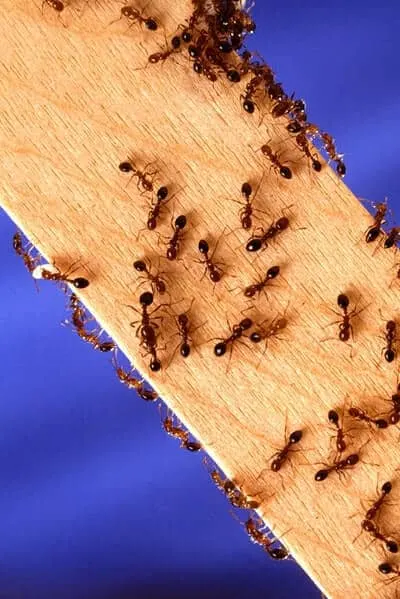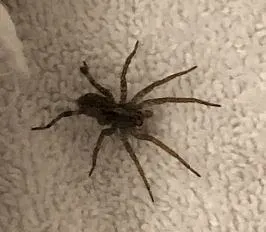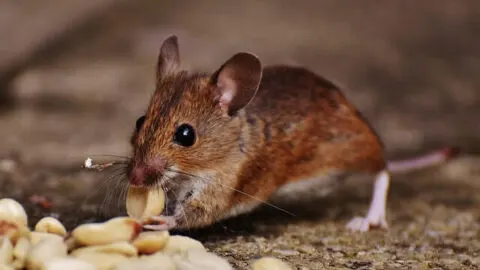I receive a lot of questions about controlling pests in the home. A huge part of an indoor pest control strategy is proper air-sealing which not only reduces entry points for pests but significantly improves the energy efficiency of the house.
But to really control pests, we need to take a comprehensive approach to understanding the complex ecology that interweaves the lives of insects, rodents, and other unwanted guests.
You can reduce the number of pests indoors by implementing a pest management strategy outside the home. Utilizing the principles of Integrated Pest Management, homeowners can properly control pests outside, resulting in fewer pests in the home.
Let’s look at how you can implement the principles of Integrated Pest Management to control pests in and around your home.
Integrated Pest Management For Homeowners
All living things are connected in a complex web of dependency, and it is this concept that Integrated Pest Management relies on. Rather than focus separately on a single pest, this method will focus on keeping the entire web in check.
What Is Integrated Pest Management?
Integrated Pest Management, (IPM), is a way to keep the pest population of your home below your threshold of tolerance. Pests are all interdependent, so the best prevention of any one pest is prevention of all pests.
For example, many homeowners would cringe at the idea of snakes in their garage. To prevent snakes in the garage, you should eliminate their food source; mainly, rodents. To eliminate rodents, you must eliminate their food source, which can be almost anything, but certainly includes common household insects like cockroaches.
Therefore, to keep snakes at bay, you must look at the web of how pests interact with each other, and take steps to manage all of them. This is where IPM comes into play.
While there are many factors that go into a successful IPM plan, the most important goal is to maintain the structural integrity of your home, and the safety of your family.
What Are The Goals Of Integrated Pest Management?
Overall, the goal of IPM is to prevent an infestation that requires chemical treatment. If you can effectively manage and monitor pest populations by controlling the environment, then you can catch and treat a problem before it gets out of hand.
The main goals of a home IPM plan are:
- Protect the health of your family and home by using prevention, and using chemical intervention only when necessary.
- Minimize the amount and toxicity of chemicals needed to control pests.
- Minimize ecological impact by using selective methods to target specific pests and affected areas.
- Identify acceptable thresholds of pest populations, and develop a plan of action that keeps the use of toxic chemicals to a minimum.
- Identify the food web of certain pests to keep all populations under the acceptable threshold.
Ideally, an IPM plan will identify acceptable levels of pest populations, and work to keep them all in check by identifying and controlling common vectors. For example, cockroaches are attracted to water, so if you have leaky pipes, it’s important to repair them. As you eliminate water sources, you stop attracting bugs.
As you stop attracting bugs, you stop attracting rodents, which then stops attracting snakes. Controlling and maintaining a few common vectors can help prevent all populations from becoming invasive on your property.
Isn’t It Easier And Cheaper To Just Spray For Pests?
Maybe at first sight. Buying a $12 can of ant killer may seem much easier and cheaper than consistently checking for water leaks. However, when you consider the fact that a carpenter ant infestation can cost thousands in structural damage by burrowing through moist support beams, fixing a few leaky pipes sounds a lot more doable.

And while spraying is sometimes warranted, it can cause more problems down the road. Of course, there’s the danger of exposing your loved ones to chemicals, but that can be properly managed to reduce risk. A more pressing problem is that spraying without an informed IPM plan can actually cause more infestations than it eradicates.
For example, if you find an ant colony in the garage, and pick up a can of RAID® Ant & Roach Killer, you will also be killing at least twelve other types of insects, plus common household spiders, for up to a month. Spiders are notorious for keeping other pests in check, and if you wipe out the spider population of your garage, it can allow other insects to multiply quickly once the spray has lost its impact.
Therefore, the goal when spraying should not be to blanketly kill everything with an exoskeleton. Rather, the goal should be to specifically target the pest, and use a variety of techniques that will reduce the population down to a manageable size (and, yes, that can mean eradication).
How To Create Your Own IPM Plan To Reduce Pests
Glad you asked. The steps involved in an IPM plan work like a cycle. You will consistently act on Step 1 until a potential pest population has been identified. At this point, you will move through the following five steps as needed until the population is either deemed tolerable, or you have taken action to reduce it. Then, you return to Step 1 to continue monitoring for potential problems.
The six steps of IPM (which will be explained in more detail below) are:
- Monitor, inspect, sample. Is there a potential problem?
- Pest identification. Is it the pest you thought it was?
- Pest biology. When is the pest most vulnerable?
- Tolerance threshold. Does the size of the population warrant action?
- Develop a strategy. What is the most effective, selective treatment?
- Evaluation. Did it work?
A properly-executed IPM plan should catch most potential pest problems before they cause significant damage. Ideally, you will recognize a problem before the population has gotten out of hand, and you will be able to modify environmental conditions to effectively deter pests before any large-scale treatments are necessary.
Step 1: Monitor. Inspect. Sample. Is There A Potential Problem?
Before you actively begin Step 1, you must first identify likely pests for your region. There’s no reason to monitor for black moccasins in North Dakota. Become familiar with common household pests in the area, and learn what attracts them into yards, garages, and homes.
To monitor for a pest is to keep tabs on a population by means of traps or sightings. To inspect is to look in areas known to attract a certain pest. For example, setting a mousetrap in the garage and waiting for it to catch a mouse is monitoring the population. However, inspecting for mice is to go looking under appliances and behind walls for a nest. Monitoring and inspecting is collectively referred to as sampling.
You should especially familiarize yourself with the ten most common household pests:
- Filth Flies. These can be houseflies, horseflies, and fruit flies, among others. Filth flies are attracted to filth: trash, manure, dead animals, etc. Flies breed in filth, so inspection is focused on areas where unsanitary conditions may occur.
- Bed Bugs. These bloodsuckers are commonly misidentified, misunderstood, or missed altogether. Studies have found that 3 out of 4 bugs sent for analysis were not, in fact, bed bugs. While, simultaneously, 3 out of 4 homeowners misidentify bed bugs as fleas or termites upon discovery. These bugs congregate in cracks and crevices near where people sit and sleep, but even one sighting is enough to call in the professionals.
- Ants. These can range from nuisance sugar ants to structurally-threatening carpenter ants. Monitor houseplants and kitchen cabinets for ant activity. Carpenter ants will feast on sugar, meat, and pet food. They tend to burrow into damp wood and are especially attracted to wood that is already damaged. Look for piles of sawdust as an indicator of activity.
- Wasps. Depending on the species, this insect can cause quite a bit of damage. Not to mention, a healthy dose of fear. Monitor for nests in corners and eaves of outbuildings, and under the gutters of your home. If you see a wasp, you should inspect your exterior walls for small holes where wasps may have created a nest in a wall void. Wasps will land on the wall and walk inside the hole, indicating a nest.
- Rats. If you see a rat, move right to step 5 and take action. This likely means there is already a full-blown infestation. To monitor for rats, keep an eye out for dark, greasy marks on walls or pavement, indicating a rat run. Also watch for damage to plastic, wood, and metal due to chewing. Rats are attracted to trash and shelter, so pay special attention to areas near your trash cans and in outbuildings.
- Mice. While similar to rats, mice nests are more likely to be found in the kitchen and around appliances. To monitor for mice, keep a few traps set behind appliances, in food storage areas, and near anything with a pilot light. If you catch a mouse, inspect within 25 feet of the area for the nest, starting with sources of heat and food.
- Termites. Regardless of species, termites can cause significant damage if left unchecked. Some species prefer dry wood, and some prefer moist wood. Either way, wood that is in contact with the foundation is the weak link. Look for mud tubes near wood that indicates termite activity. Also, monitor cracks and crevices in the foundation and siding that would allow termites access to structural wood.
- Cockroaches. While thought to signify unsanitary living conditions, cockroaches can actually survive in homes that are quite clean. Cockroaches are active at night and will be hidden away in dark cracks and crevices during the day. To inspect for cockroaches, look behind appliances and in dark cabinets and drawers. You can also monitor for eggs and droppings. Cockroaches will find their way in through cracks and crevices, but will generally settle near food, so focus your efforts on the kitchen and surrounding areas.
- Mosquitoes. These insects belong to the same family as flies but have some defining characteristics. They generally do not invade a home, but they can quickly populate your yard with a small amount of standing water. Mosquitoes are easy to monitor for by simply walking through the yard at dusk when they become active.
- Spiders. Spiders are the most commonly misunderstood pest. Generally speaking, spiders are actually quite beneficial because they keep insect populations under control. However, poisonous spiders are a true pest and must be dealt with. Spiders can hide almost anywhere but will be attracted to places with food. Monitor corners, houseplants, and under furniture for spiders and webs.
Most sampling will naturally accompany the regular cleaning and maintenance of your home. Some, like termites, may take a more concerted inspection effort. The important thing is that you are consistently sampling for pests as you keep up with the regular maintenance of your home.
Step 2: Identification: Is It The Pest You Thought It Was?
If you do happen to spot a pest, it’s time to figure out exactly what you’re dealing with. If you see ants in the kitchen, it might be tempting to just spray and get rid of the problem. However, if you’re dealing with sugar ants, the solution is generally much simpler; just remove the food source.
On the other hand, if you’re dealing with carpenter ants, you may kill some bugs but completely miss the fact that they’re eating your house. Identification is important so you know where to look for damage.
Identification can also help you determine if there really is a problem at all. For instance; spiders are very rarely a true pest. They can actually be quite beneficial, and an important part of keeping other pest populations within a reasonable margin. However, if you write off the shiny black spider with a red hourglass on its abdomen, you may be in for a very painful lesson in pest management.

Finally, identification can help you determine when to call in a professional. If you see a black snake in the garage but are unable to determine if it’s a cottonmouth or a common black rat snake, it’s time to call a professional for removal. It’s not worth risking a venomous snake bite, and an expert can help determine where it came from and how to prevent more.
Step 3: Biology. When Is The Pest Most Vulnerable?
If you’ve identified a pest and determined you must take action, it’s time for a quick Google search. The goal is to create a strategy that is efficient and effective. To do this, it’s important to target the pest when it is most vulnerable.
This may be a certain time in its lifecycle. For example, mosquito larva is completely confined to the still water they’ve hatched in, and much easier to target than adults. Since mosquitoes only live six weeks, it makes the most sense to target breeding areas for a six-week period until you’ve eradicated all larva and waited for the adults to die out.
Pests may also be more vulnerable during certain times of the day, or during certain seasons. Also, take into account how the pest colonizes. One species of snake may be territorial and live alone, where other species may congregate together.
Some pests, like ants and cockroaches, are vulnerable because they live in colonies and follow the same trails every day and will track poisons back to the rest.
Once you understand how the pest you’ve identified lives, you will be able to find the best way to contain and treat it.
Step 4: Tolerance Threshold. Does The Size Of The Pest Population Warrant Action?
Once you’ve determined you have a pest on the property, and you understand its biology, you will be able to judge whether the population is above an acceptable threshold. Take into account your property, who lives in your home, and what steps you’re willing to take.
Two people may have very different thresholds for the same pest. You may find a wasps’ nest in the rafters of an outbuilding, and consider them to be well within your acceptable threshold since they kill harmful caterpillars in your vegetable garden. However, another homeowner may have zero tolerance for even a single wasp because their toddler is deathly allergic to them.
Studying the biology of a pest will also tell you if the population has exceeded the acceptable threshold. Rats, cockroaches, and bedbugs should be considered above the tolerable threshold if you see even one. For every cockroach you see, there are probably a thousand close by. These pests require immediate attention.
You can also determine an acceptable threshold based on the time of year. Some pests, like mosquitoes, may only be an issue for a few weeks or months, then die off naturally or leave when the weather changes. Others, like flies, are more easily controlled by maintaining a clean environment than spraying or trapping. These pests are more of a nuisance than a danger, and rarely need more than a few quick alterations to keep them in check.
Step 5: Develop A Strategy. What Is The Most Effective, Selective Pest Treatment?

Now that you’re familiar with the pest, determined its most vulnerable state, and decided it has passed your threshold of tolerance, it is time to decide on a treatment strategy. The goal of IPM is to use chemical treatment as a last resort, so a treatment strategy should aim to modify the environmental factors before turning to chemicals.
In general, removal of food, shelter, and water will help repel most pests. Thoroughly cleaning an area can disrupt the population of some pests enough to make them find a new home. Also, remember that some pests attract other pests.
You may have spiders in the garage because you have flies in the garage. Buying trash cans with tight-fitting lids should solve the fly problem, and cleaning out the garage will remove many options for shelter. This will likely be enough to encourage the spiders to look for new homes.
For some pests, mosquitoes especially, removing a breeding area will effectively control the population. This can be as simple as draining a kiddie pool or grading a low area in the yard that collects water.
Rats, mice, and snakes can be controlled with traps. Poisons should be a last resort with rodents since they can pass that poison along to predators. However, it may be necessary if the population size requires it.
Bed bugs, termites, construction ants, and wasps will require more extensive strategies. These pests are hard to locate and kill. Plus, they can do an enormous amount of damage. If you have been sampling for pests regularly, you should be able to locate an infestation early on.
This will allow you to use less extreme methods for dealing with them. If you suspect bed bugs, it’s best to be safe and call an exterminator regardless of the population size.
If you determine that an infestation of any pest has grown to the point where you must use chemical methods to control it, find a selective pesticide that will target only the species you’re dealing with. A pesticide should never be the only form of control, however. You cannot simply spray for ants and assume the problem has been taken care of.
First, locate the nest or colony, and determine what attracted the pest to your home in the first place. Modify whatever environmental factors attracted them, and then spray. This way, you will destroy most of the population, and ensure there is no reason for the survivors to stay and repopulate.
Step 6: Evaluation. Did The Pest Control Strategy Work?
If you’ve reached Step 6, this means you successfully identified a pest, found its weakness, determined it was in need of treating, and carried out a control strategy. In order to consider your treatment successful, the population must drop below your tolerance threshold and stay there.
Take the information you’ve gathered on the pest you treated, and monitor potential sites they could migrate to. Take into account the life cycle, and pay particular attention to the amount of time it takes to reproduce. Rats can reproduce five times per year.
If you treat and see no rat activity for a few weeks, this does not mean you’ve succeeded. One pregnant rat can have fourteen pups, but you won’t see them for a few months. Find a way to actively monitor the population until a few reproductive cycles have passed.
During the evaluation process, one of two things will happen. Either the population will be under control, or it won’t. If you notice the population begins to grow again, it’s time to go all the way back to Step 2 and make sure you’ve identified it correctly.
You may have thought you were dealing with German cockroaches, but it’s really American cockroaches. Or, you may have misidentified bed bugs as termites.
Work back through each step to determine where you may have erred. When you reach the treatment stage again, resist the urge to just use a broad-spectrum chemical. It may seem easier, but it is much more effective in the long run to fully understand and treat the problem rather than kill every pest in sight.
Conclusion
While creating an IPM plan for your home may seem overwhelming, it will save you time, money, and headaches in the future if you’re able to catch pest infestations early.
Once you’ve become familiar with the warning signs, sampling for pests will become a natural part of your home maintenance.
Remember; routine maintenance is one of the best ways to prevent pests in the first place. Any repair or upgrade that increases your home’s energy efficiency is going to help make your home less desirable for insects and rodents.
Already have a pest problem? Your local extension office is a great place for free, regionally-specific information on how to handle it most effectively.
Related Articles:
Why Are Rats In My Garage?
Why Do Snakes Keep Coming In My Garage?
Make A Garage Energy Efficient: Improve Comfort, Pest Control
As a homeowner, I am constantly experimenting with making the structure of my house more energy-efficient, eliminating pests, and taking on DIY home improvement projects. Over the past two decades, my family has rehabbed houses and contracted new home builds and I’ve learned a lot along the way. I share my hard-learned lessons so that you can save time and money by not repeating my mistakes.

